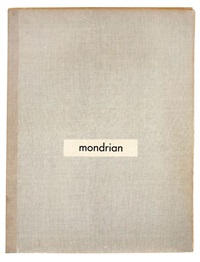Piet Mondrian
(Dutch, 1872–1944)
Biography
Piet Mondrian was a Dutch artist famous for his iconic Composition series of grid paintings composed of black lines, white grounds, and primary colors. In Broadway Boogie-Woogie (1942–1943), Mondrian represented New York’s streets as a series of squares and lines in an attempt to capture the rhythmic vitality of the city. “I wish to approach truth as closely as is possible, and therefore I abstract everything until I arrive at the fundamental quality of objects,” he once reflected. Born Pieter Cornelis Mondriaan on March 7, 1872 in Amersfoort, Netherlands, he studied at the Rijksakademie van Beeldende Kunsten in Amsterdam. Prior to his move to Paris in 1911, Mondrian painted naturalistic depictions of trees, still lifes, and windmills. Influenced by avant-garde practices of the day, such as Cubism and Pointillism, as well as Eastern mysticism, Mondrian became increasingly interested in discovering the underlying spiritual qualities of nature through abstraction. He went on to become a founding member of the De Stijl movement alongside Theo van Doesburg, who also sought to simplify form and distance himself from depicting objects. Mondrian published numerous texts during his life, including a book on what he called Neo-Plasticism, which influenced a generation of abstract artists. He died on February 1, 1944 in New York, NY at the age of 71. Today, the artist’s works are held in the collections of The Museum of Modern Art in New York, the Rijksmuseum in Amsterdam, the Tate Gallery in London, and the Carnegie Museum of Art in Pittsburgh, among others.
Piet Mondrian
(649 results)
























